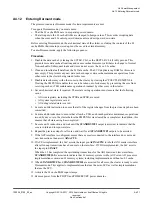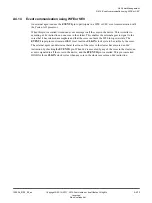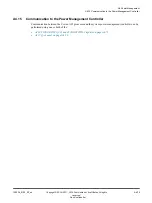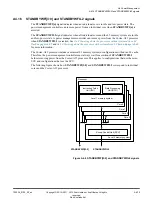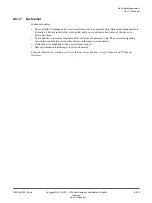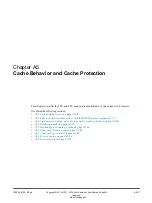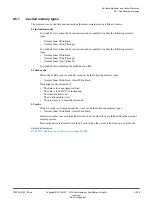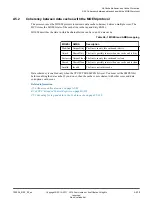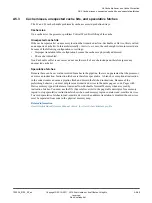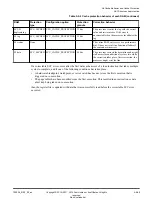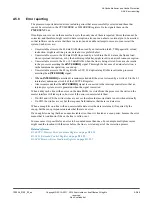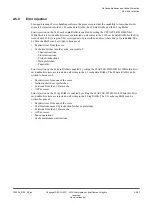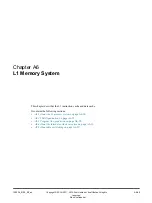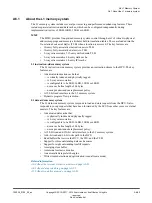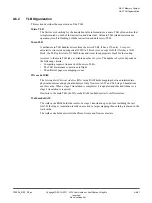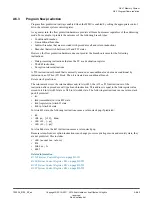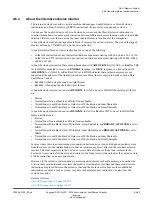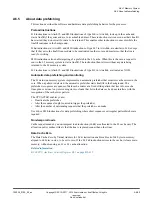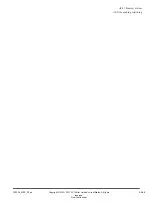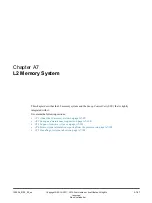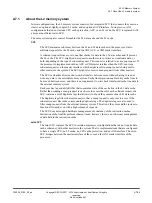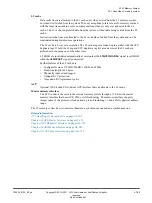
A5.7
About cache protection
The processor protects against soft errors that result in a RAM bitcell temporarily holding the incorrect
value, by writing a new value to the RAM to correct the error. If the error is a hard error that is not
corrected by writing to the RAM, for example a physical defect in the RAM, then the processor might
get into a livelock because it continually detects and then tries to correct the error.
Some RAMs have
Single Error Detect
(SED) capability, others have
Single Error Correct, Double Error
Detect
(SECDED) capability. The L1 data cache dirty RAM is
Single Error Detect, Single Error Correct
(SEDSEC). The processor can make progress and remain functionally correct when there is a single bit
error in any RAM. If there are multiple single bit errors in different RAMs or within different protection
granules within the same RAM, then the processor also remains functionally correct.
If there is a double bit error in a single RAM within the same protection granule, then the behavior
depends on the RAM:
• For RAMs with SECDED capability, the processor detects and reports the error. If the error is in a
cache line that contains dirty data, that data might be lost, which then causes data corruption.
• For RAMs with only SED, the processor does not detect a double bit error. This might cause data
corruption.
If there are three or more bit errors the processor might or might not detect the errors, depending on the
RAM and the position of the errors within the RAM.
The cache protection feature of the processor has a minimal performance impact when no errors are
present. When the processor detects an error, it stalls the access that caused the error while it corrects the
error. When the correction is complete, the access either continues with the corrected data or is retried. If
the access is retried, it either hits in the cache again with the corrected data or misses in the cache and re-
fetches the data from a lower level cache or from main memory.
Table A5-2 Cache protection behavior of each RAM
RAM
Protection
type
Configuration option
Protection
granule
Correction behavior
L1 instruction
cache tag
Parity, SED
CPU_CACHE_PROTECTION 31 bits
The processor invalidates both lines in the cache
set then refetches the requested line from the L2
cache or external memory.
L1 instruction
cache data
Parity, SED
CPU_CACHE_PROTECTION 18 bits
TLB
Parity, SED
CPU_CACHE_PROTECTION 31 bits or 51
bits
The processor invalidates the entry and starts a
new pagewalk to refetch it.
L1 data cache
tag
Parity, SED
CPU_CACHE_PROTECTION 32 bits
The processor cleans the line and invalidates it
from the L1 cache. It uses SCU duplicate tags to
get the correct address. It refetches the line from
the L2 cache or external memory.
L1 data cache
data
ECC, SECDED CPU_CACHE_PROTECTION 32 bits
The processor cleans the line and invalidates it
from the L1 cache. It corrects single bit errors as
part of the eviction. It refetches the line from the
L2 cache or external memory.
L1 data cache
dirty
Parity,
SEDSEC
CPU_CACHE_PROTECTION 1 bit
The processor cleans the line and invalidates it
from the L1 cache. It corrects single bit errors as
part of the eviction.
Only the dirty bit is protected. The other bits are
performance hints, therefore do not cause a
functional failure if they are incorrect.
A5 Cache Behavior and Cache Protection
A5.7 About cache protection
100236_0100_00_en
Copyright © 2015–2017, 2019 Arm Limited or its affiliates. All rights
reserved.
A5-84
Non-Confidential
Summary of Contents for Cortex-A35
Page 4: ......
Page 18: ......
Page 26: ......
Page 27: ...Part A Functional Description ...
Page 28: ......
Page 145: ...Part B Register Descriptions ...
Page 146: ......
Page 573: ...Part C Debug ...
Page 574: ......
Page 845: ...Part D Appendices ...
Page 846: ......


